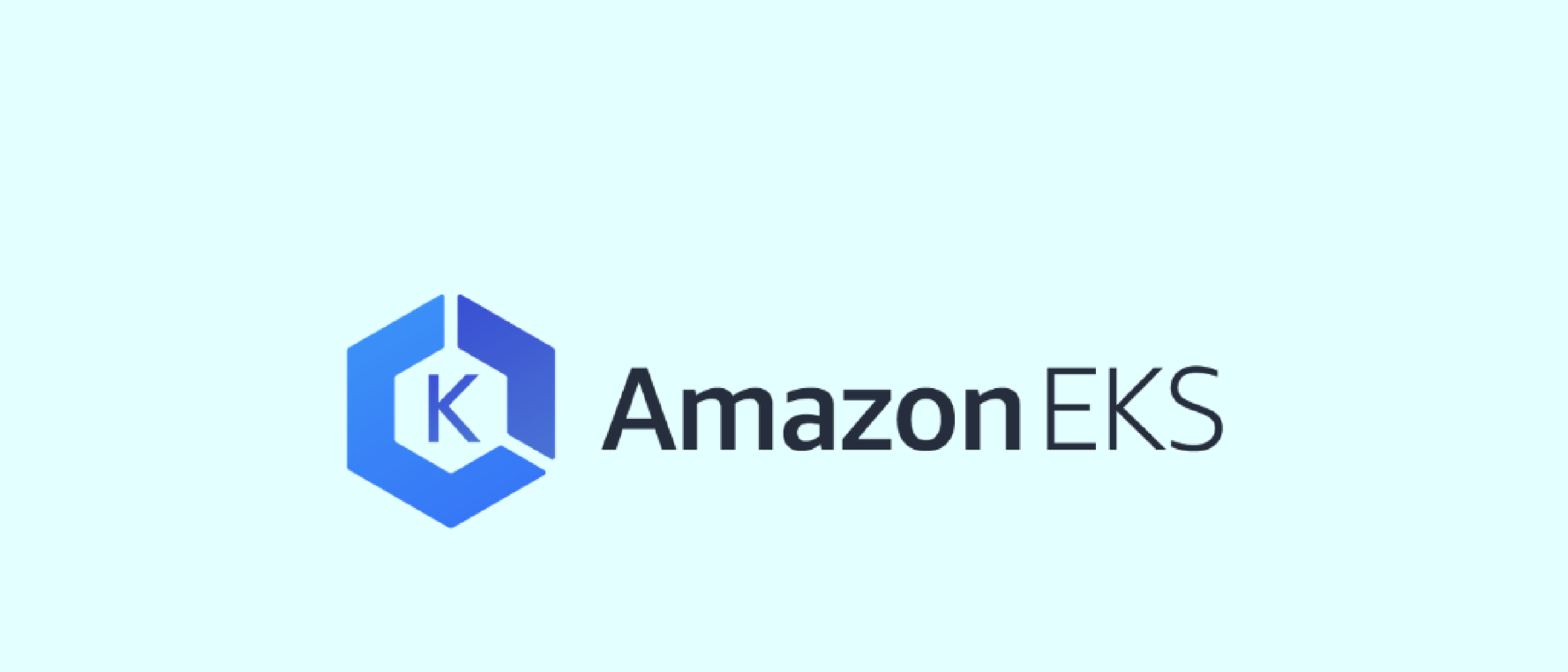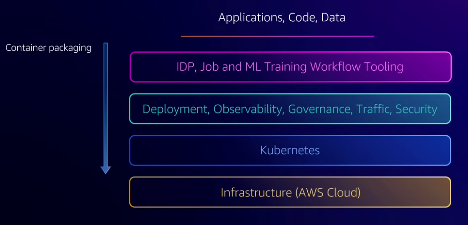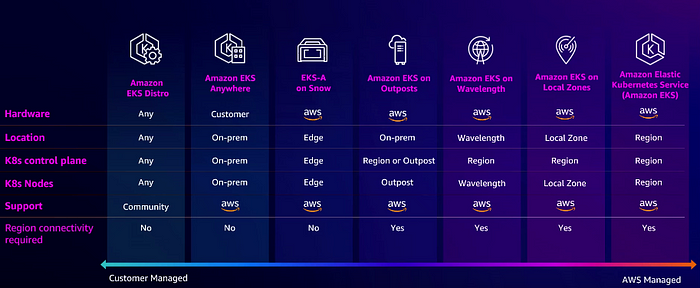Future of Amazon EKS
Posted on January 26, 2024 • 6 min read • 1,195 words
Recently, I had to watch the AWS re-Invent 2023 session on “The Future of Amazon EKS(CON203),” presented by Nathan Taber, Head of Product for Kubernetes at AWS.
In this article, I will attempt to summarize the key points discussed, with a disclaimer urging readers to watch the session for a comprehensive understanding.
Why Kubernetes Matters
Kubernetes, an open-source technology for orchestration, has not just gained popularity but has become a runaway success. According to a survey by the Cloud Native Computing Foundation (CNCF), the governance organization for Kubernetes, 64% of enterprise organizations were using Kubernetes in production last year, with an additional 25% evaluating or piloting it. This significant adoption reflects the pivotal role Kubernetes plays in modern IT operations. In this article, we will explore the reasons behind this surge in popularity and the extensive investments made by AWS in Amazon EKS.
Why do people use Kubernetes?
- Driving Innovation: The primary reason organizations turn to Kubernetes is to innovate on behalf of their customers. The ability to move quickly and make changes safely and rapidly is crucial for innovation. Kubernetes provides a standardized system and set of standards for development teams, allowing organizations to embrace change and drive better innovations for their users.
- Reducing Fixed Expenses: Another key motivator for adopting Kubernetes is the desire to reduce fixed expenses. Organizations transition from static resources to dynamic shared resources using containers, breaking down complex contracts and lowering management overhead. This shift results in cost savings while maintaining flexibility and scalability.
- Enabling the Entire Organization: Kubernetes offers an API standard for orchestrating applications, providing a common ground for diverse environments. Whether running in different regions of the AWS cloud, on-premises, or on other cloud providers, ==Kubernetes allows organizations to establish best practices, governance controls, security measures==, monitoring, and cost management consistently across all deployment locations. This standardization enables organizations to manage complexity, even in scenarios involving acquisitions, mergers, or multi-cloud setups.
- Planning for the Future and Reducing Risk: Kubernetes not only addresses immediate operational needs but also aids in planning for the future and reducing risks. Standards provided by Kubernetes support long-term development efforts and mitigate tech debt, a concern not only for CEOs and CTOs but also for engineers and development teams.
AWS’s Investment in Kubernetes: Amazon EKS, celebrating its fifth year, represents AWS’s significant investment in Kubernetes. AWS has diligently worked to make EKS a robust platform, excelling in performance, scale, reliability, and availability. Data from CNCF and AWS customers highlight that more Kubernetes workloads run on AWS than on any other platform, with billions of EC2 instance hours being run with EKS every week.
What are customers doing in EKS?
Customers are ==leveraging== EKS for a variety of purposes, activities range from the migration of legacy .NET and Java applications to the cloud, the execution of data processing tasks, the construction of real-time backends, and the development of web frontends.
Recently, a substantial emergence of machine learning and AI has been observed as a major utilization for EKS and Kubernetes, covering diverse areas such as generative AI and robotics. Personally, a profound interest lies in autonomous vehicles, considered exceptionally captivating. Notably, substantial autonomous vehicle training activities are currently taking place in EKS. Witnessing companies actively engaged in developing future technologies with tools like machine learning, kube ray, Spark, and kube flow running on EKS is a remarkable and exciting aspect of the current landscape.
Kubernetes the Operating System

source: here
In the exploration, analysis extends to the infrastructure, observing the intricate layers where Kubernetes plays a pivotal role by orchestrating acro==ss diverse infrastructure elements, seamlessly knitting them together. Customers actively contribute by layering deployment==, observability, governance, traffic controls, and security controls on top of Kubernetes.
Remarkably, numerous projects, 599 to be precise, within the CNCF, either run inside or next to Kubernetes. Among these, 173 projects operate with open governance directly supervised by the CNCF. Managing this extensive platform layer on top of Kubernetes is a substantial undertaking.
Furthermore, AWS is actively engaged in developing integrations to allow its services to seamlessly provide capabilities into Kubernetes. Elevating another layer, the Integrated Developer Platform (IDP) becomes crucial in packaging and running applications on Kubernetes, orchestrating data processing jobs, and managing machine learning workflows. As navigation progresses through these diverse layers, focus revolves around enhancing customer experiences and refining their processes within the packaging, container, and running ecosystem on this comprehensive stack.
Goals for AWS Kubernetes
- Undifferentiated Heavy Lifting Removal:
- Customers relieved from the burden of undifferentiated heavy lifting associated with managing Kubernetes on AWS.
- Operational complexities are handled, allowing users to shift their focus towards core competencies rather than being engaged in routine task management.
2. Operations Simplification and Access Granting:
- Aims at simplifying the Kubernetes experience on AWS, providing users with an environment that is streamlined and user-friendly.
- Users are granted complete access to the scale, stability, and security of the cloud, ensuring that the operational landscape is seamlessly and efficiently managed.
3. Perpetuation of Open Source Standards:
- Continual maintenance of the open source standard of Kubernetes.
- This involves ensuring compatibility with the 599 projects within the CNCF, enabling rapid innovation, access to new developments from the community and partners, and ongoing improvement of community standards.
How AWS Support Kubernetes
Engaged in comprehensive support for Kubernetes within the AWS ecosystem, Amazon EKS stands out as a pivotal element in the management bucket. Serving as a cornerstone in AWS’s commitment to Kubernetes, EKS exemplifies the dedication to providing customers with a robust and efficient Kubernetes management solution. Beyond EKS, AWS offers diverse approaches, including the development of a Kubernetes distribution, integration through numerous open-source projects facilitating connectivity between Kubernetes and AWS components, and active participation in upstream development.
The AWS team extends its commitment to security by contributing to the security council of the Cloud Native Computing Foundation (CNCF) and the Kubernetes project, ensuring robust safety measures. Furthermore, AWS plays a vital role by offering direct sponsorship, providing financial support to community projects that contribute to lowering costs and enhancing the availability of shared resources for everyone involved.
Run Kubernetes everywhere

source: here
With EKS at the forefront, Kubernetes in AWS offerings have expanded across diverse environments. EKS is omnipresent, spanning our Distro and EKS Anywhere, a tool chain tailored for on-premises Kubernetes deployment. Beyond traditional AWS regions, EKS extends its reach to Snow, Outposts, local zones, and wavelengths. This extensive coverage ensures that whether you choose to run Kubernetes on AWS infrastructure or in various on-premises scenarios, consistent and high-performing Kubernetes experiences are readily available. AWS goal is to provide users with flexible options, ensuring a consistent and reliable Kubernetes experience regardless of their chosen deployment environment.
5 years of EKS
Reflecting on the substantial development invested in this product over the past five years, it’s noteworthy to mention that over 222 different launches have been executed since the announcement of EKS in 2018. These launches encompass a spectrum of enhancements, from price reductions and compliance measures to the initiation of new projects, acceleration of cluster creation times, addition of support for new instances and regions, and the introduction of critical features.
Nova Lailatul Rizkiyah